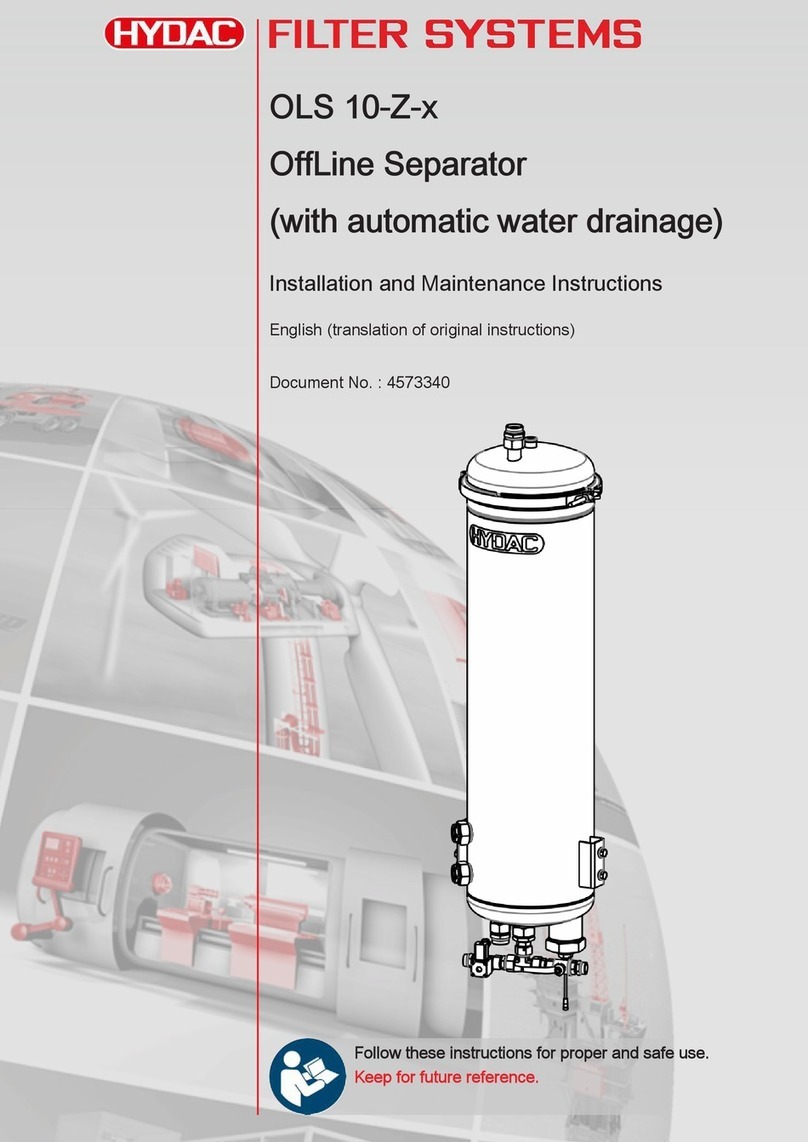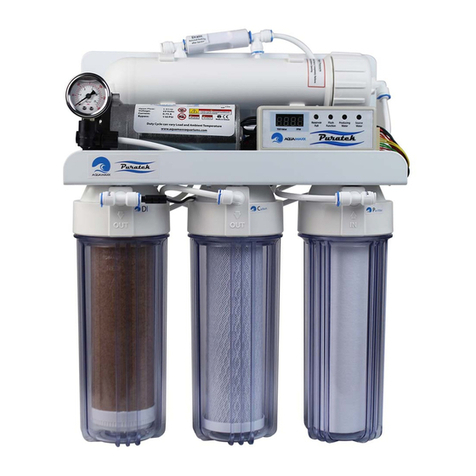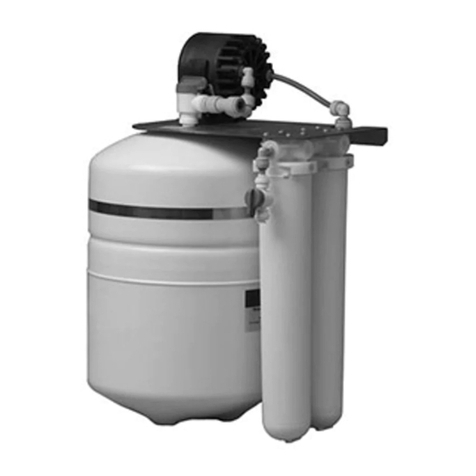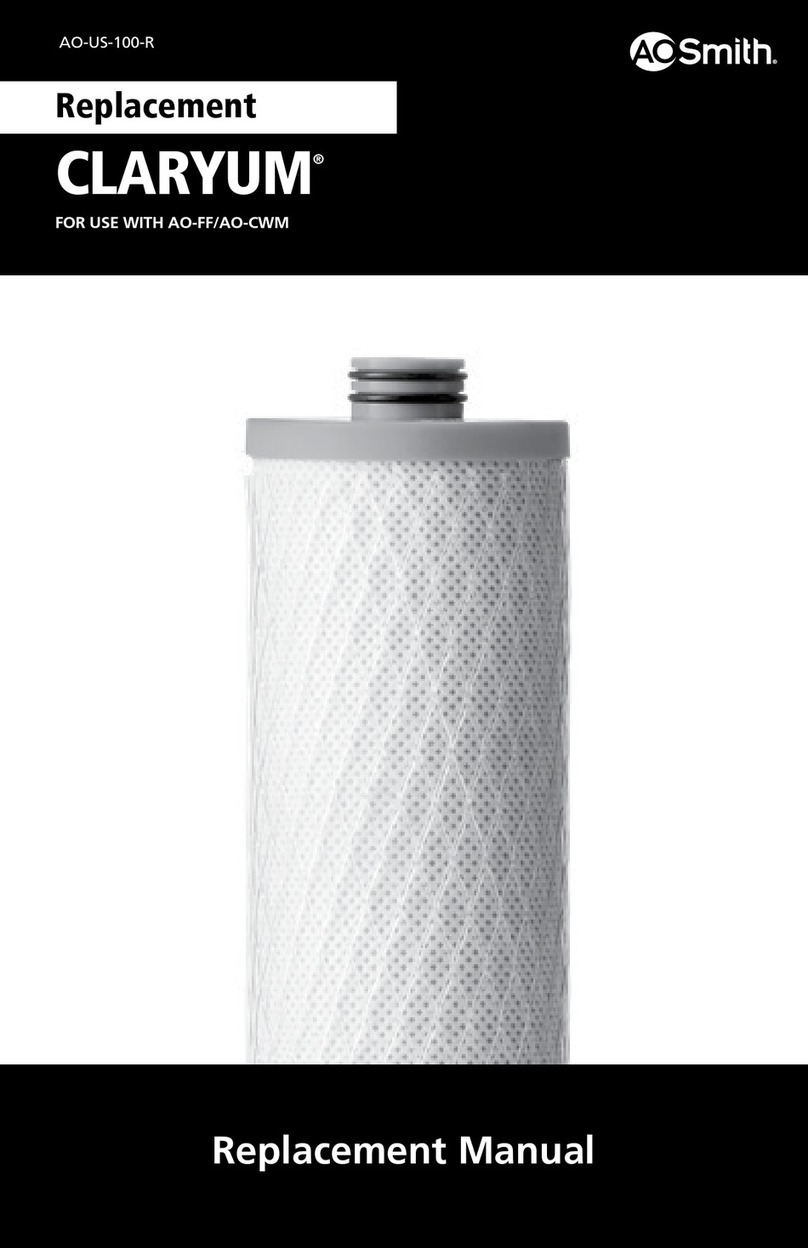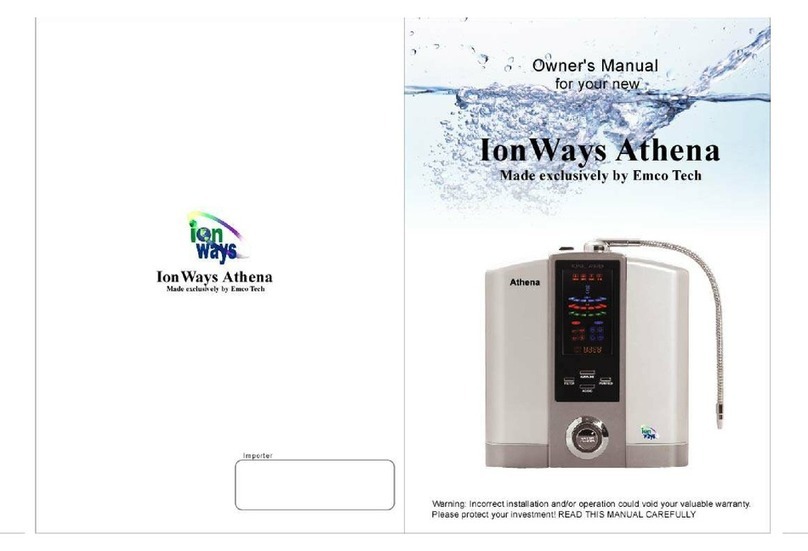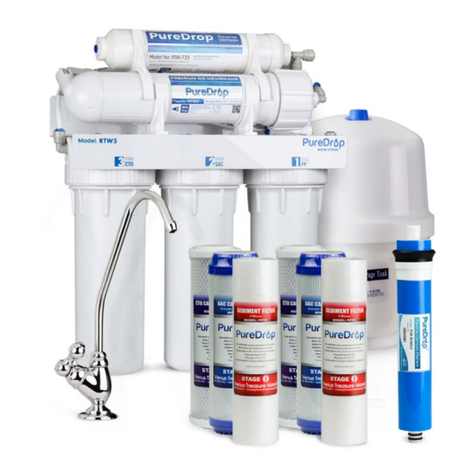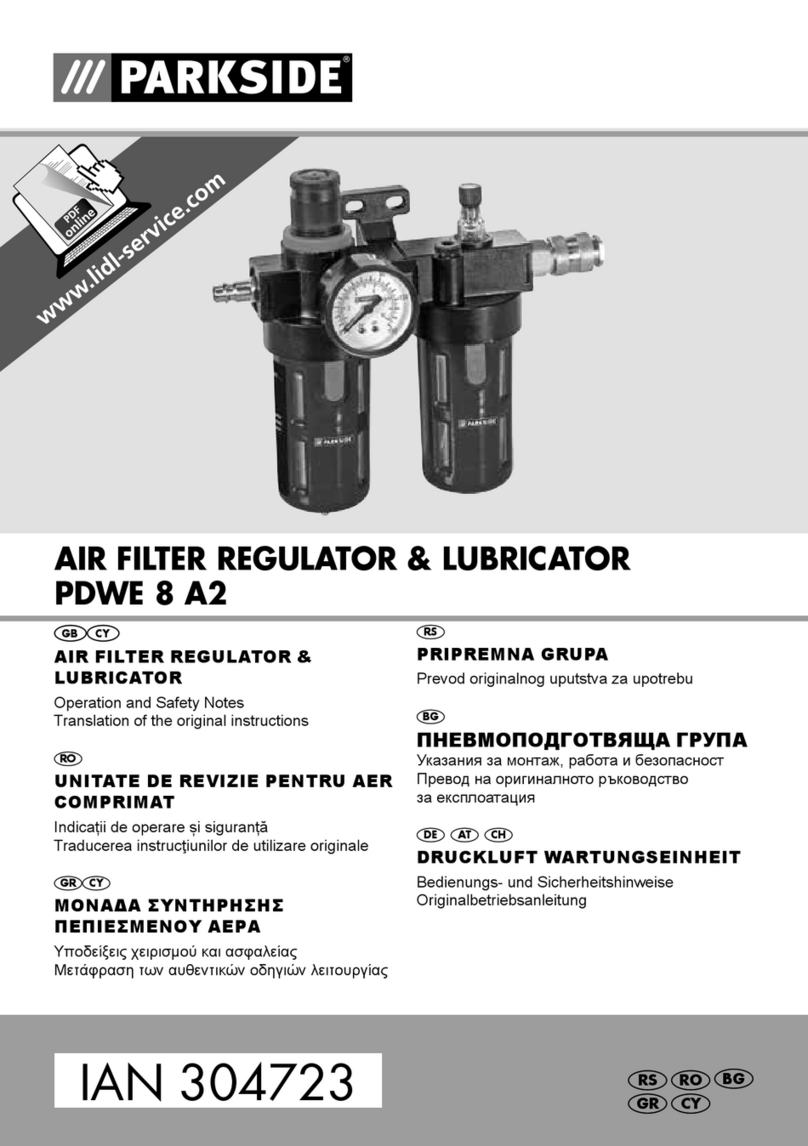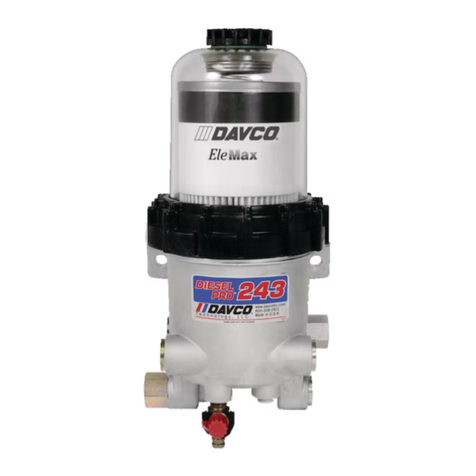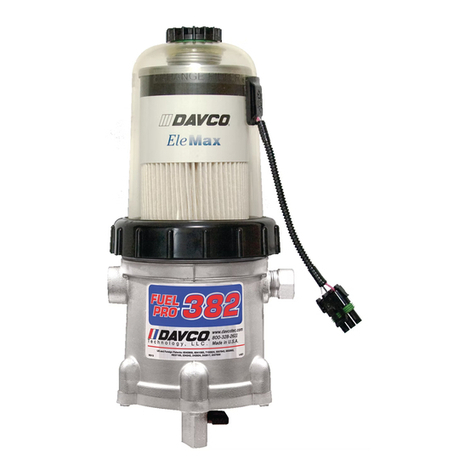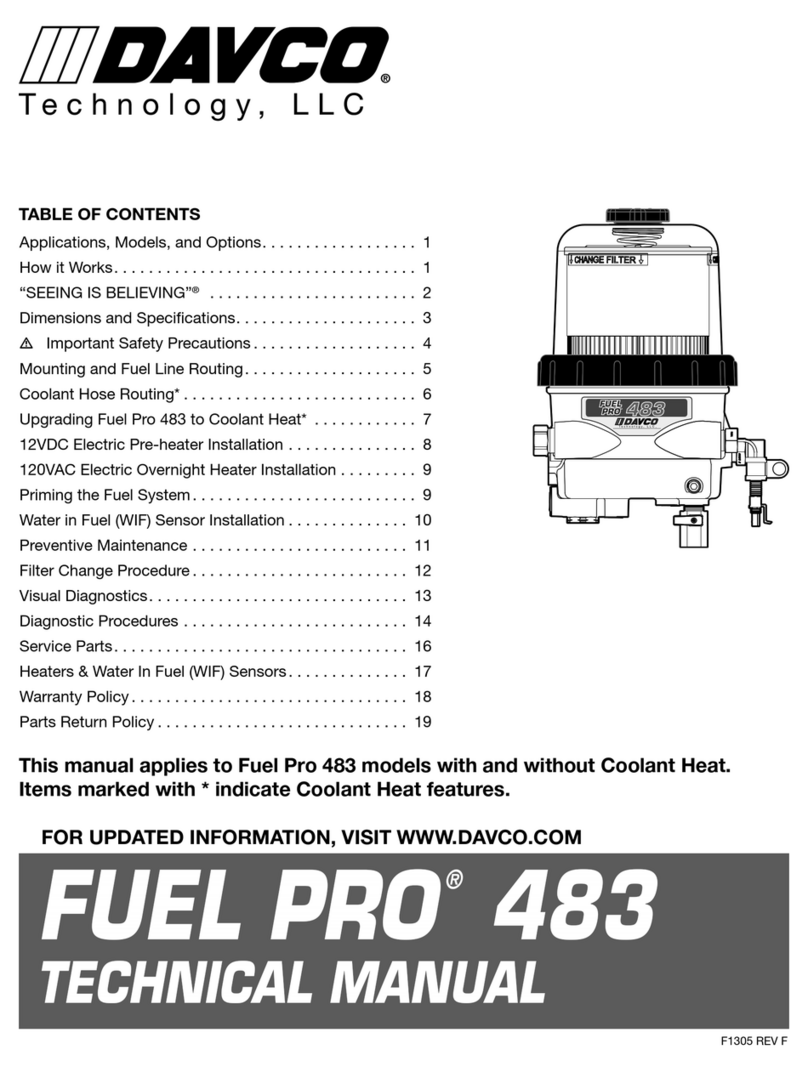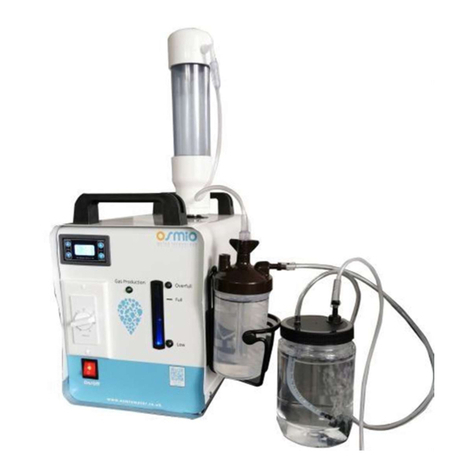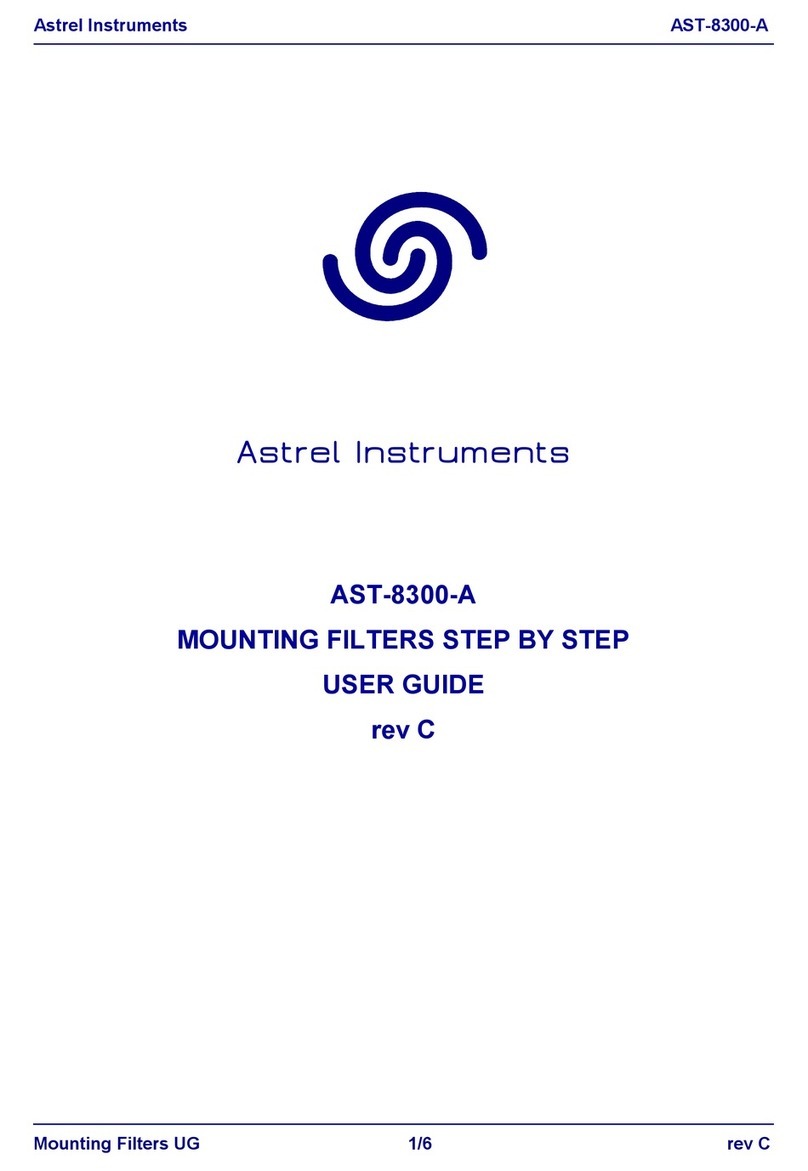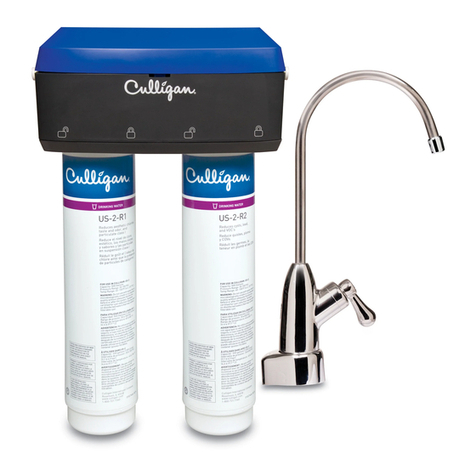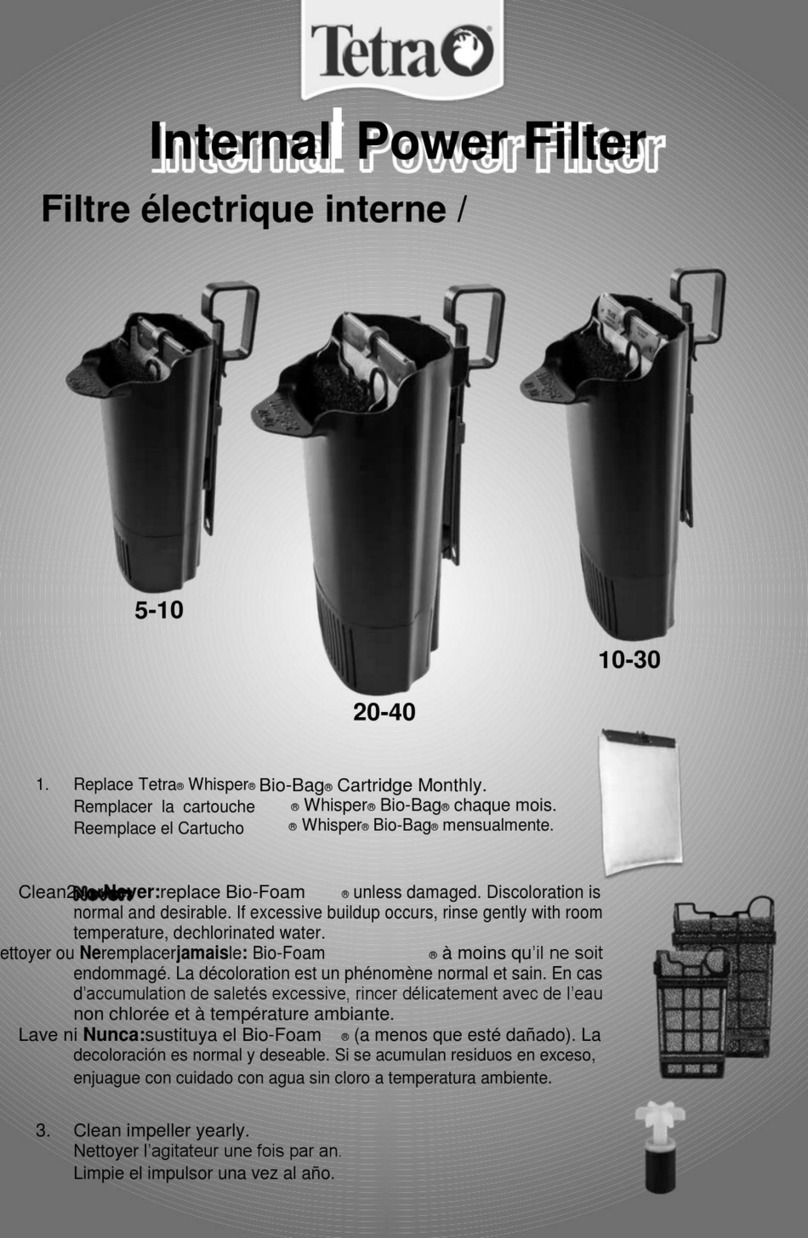
FUEL PRO®485
TECHNICAL MANUAL
®
F1485 REV B
Technology, LLC
10
DAVCO Technology, LLC www.davco.com800-328-26111600 Woodland Drive, Saline, MI 48176-1629
DIAGNOSTIC PROCEDURES AIR LEAKS
Every FuelPro is factory tested for leaks and is identified
with a traceable number prior to shipment. Most field issues
associated with leaks are related to loose fittings. These
leaks are easily eliminated by checking and torqueing the fuel
fittings in the area of the leak. Some fittings may also require
the application of liquid or paste type thread sealant.
All suction side fuel filters experience bubbles. It is normal
to see champagne size bubbles in the FuelPro cover, at the
FuelPro outlet or at the lift pump.
IN ORDER TO RETURN A FUELPRO FOR EVALUATION,
THE FOLLOWING PROCEDURESTESTS MUST BE
COMPLETED BEFORE REQUESTING A DAVCO RGA
RETURN GOODS AUTHORIZATION NUMBER.
I. Air bubbles will be visible in the clear cover of the
FuelPro if the leak originates between the fuel tank and
the FuelPro. The following is a quick test to isolate the air
leak source.
A. Remove the FuelPro inlet hose.
1. Install a jumper hose from the FuelPro to the
fuel tank (through the fill cap) or to a container of
fuel.
2. Start the engine. If this eliminates the air
bubbles, the air source is at the fuel tank fittings
or hose connections.
3. Tighten all fittings and connectors. Retest.
a. If air bubbles persist, the air source is on the
FuelPro side of the system:
i. Tighten all fittings on the FuelPro.
ii. Loosen the collar until it spins freely.
Apply downward pressure on the top of
the cover and rotate the collar until con-
tact. Use a DAVCO wrench (if necessary)
to tighten the collar three additional ribs.
b. If the drain valve is suspected, install a plug
in place of the drain valve (for test purposes
only).
4. If air bubbles persist, test as follows:
a. Remove the FuelPro from the chassis.
b. Plug the fuel outlet port. Do not remove filter,
cover/collar, vent cap, drain valve and/or
check valve. If the FuelPro is equipped with a
pre-heater, do not remove the pre-heater.
c. Apply 15 PSI of air pressure at the fuel inlet.
Immerse the FuelPro in a tank of water and
look for air bubbles.
d. Correct the source of the air leak and retest.
II. Bubbles Not Visible: If there are symptoms of sucking air
(indicated by engine loping/rough running performance/
power loss, etc.) and there are no bubbles in the clear
cover, the air leak is either at the FuelPro outlet fitting,
vent cap o-ring, the lift pump inlet connection, or the fuel
hose/connections to the lift pump. Inspect and tighten
fittings as needed.
III. Excessive Restriction: If the fuel level is at the top of the
filter, replace the fuel filter. The FuelPro will not cause
excess system restriction if the fuel level is below the top
of the filter. The only exception is if the grommet is not
installed in the bottom of the filter element.
IV. Loss of Prime: When air is introduced into the fuel
system, (i.e. draining water from the FuelPro or when
replacing the fuel filter) a check valve is needed to keep
the fuel system primed from the FuelPro back to the fuel
tank. A check valve is standard with every FuelPro.
V. To test for proper check valve operation, place a drain pan
under the FuelPro, remove the fuel inlet hose and open
the vent cap. Fuel should not flow out of the FuelPro,
although slight seepage of fuel is normal. If fuel flows out
of the FuelPro fuel inlet, “Check Valve Service”.




















